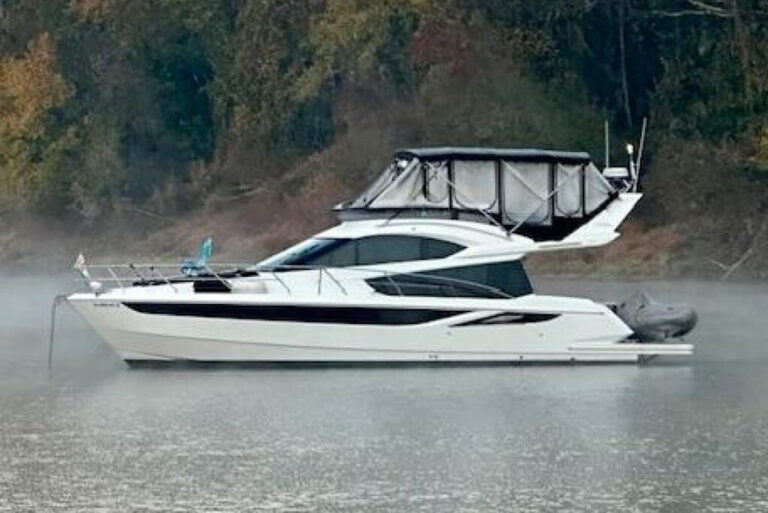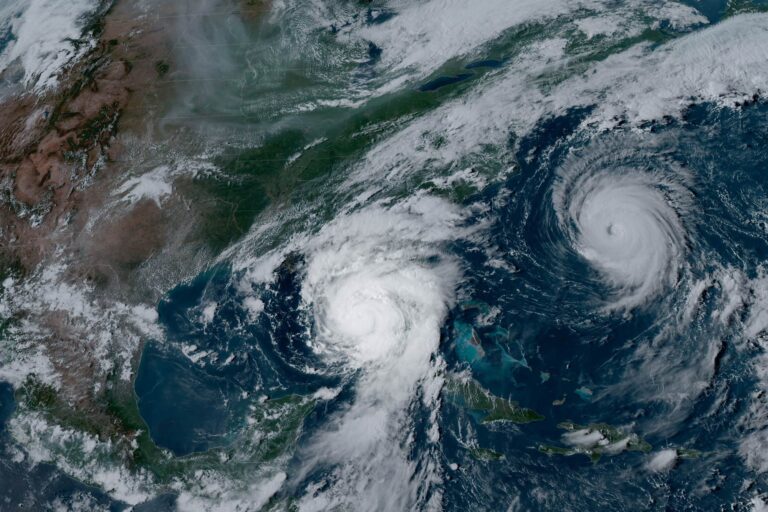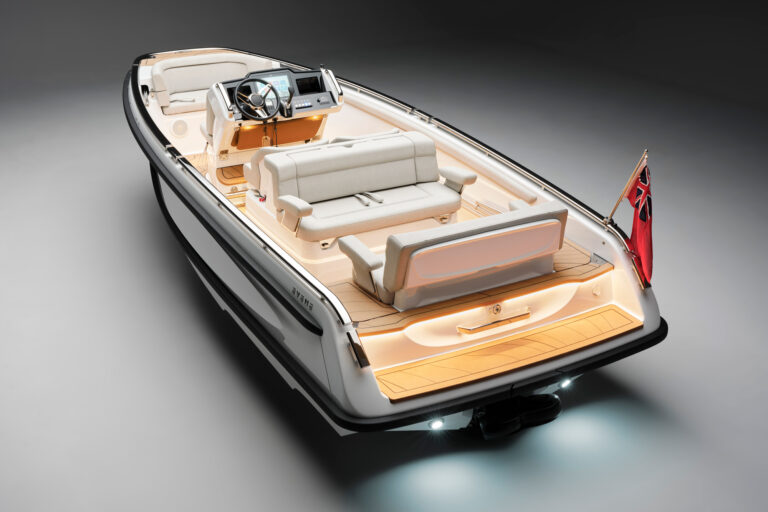America’s Cup XXXI, just under way in New Zealand, has evolved into the private playground of brash, new-money billionaires eager to participate in the on-water proceedings to a degree unprecedented in modern times. Stories about high-profile syndicate leader Larry Ellison depict him smiling about his $85 million investment and pointing out that, unlike the owner of the New York Yankees, who can’t play on the team, he can take the wheel of his America’s Cup yacht at the snap of his imperious fingers. Biotech billionaire Ernesto Bertarelli is underwriting a $60 million Swiss challenge and has appointed himself navigator. Shipping magnate Vincenzo Onorato came right out and named himself skipper of his Mascalzone Latino challenge.
From the outset, the America’s Cup has attracted men who are able, and, more important, willing to spend substantial amounts in a quest for a homely mug with no bottom. Consider the J-Class Endeavours of Tommy Sopwith, whose Camels cleared the skies during WWI; Sir Thomas Lipton, who lost with his Shamrocks but added to his already sizable fortune by selling tea to America; Mike Vanderbilt, skipper of the winning J-boat Rainbow who was so wealthy that on the day his father died, he had more money than the U.S. Treasury. The America’s Cup was re-launched after WWII in 12-Meters, supposedly to keep costs down, but the event has always attracted men of substantial means willing to spend freely to win: Cunningham, Bich, Bond, Fay, Gardini, Koch. Some left the driving to the pros, and some did not.
In the current Cup regatta, the spending threshold has been raised to new heights by a bumper crop of extremely wealthy syndicate owners who show no restraint about playing in the sandbox. Would the likes of Ellison or Onorato be invited to crew on a Cup boat without a fat checkbook tucked in their pockets? Would a serious challenger ask Bertarelli to navigate? Not likely.
Still, despite the unprecedented financial firepower on display in Auckland this time around, at least one bargain-basement team, staffed with skilled sailors, could walk off with the whole enchilada. Dennis Conner, of course, has earned his place on Stars & Stripes, not just as the team leader, but for a lifetime of Cup racing.
With some syndicates spending $80 million or more to play, several Cup perennials and wannabes have decided to stay clear this time around. Cup regular Nippon, for example, sold off its assets (knowing it can buy competitive boats in just a few months), but says it plans to return with a vengeance in 2006. Dawn Riley and the coed America True had intended to challenge but, taking a look at where the minimum budgets were soaring, decided wisely to sit this one out, get their ducks (and bucks) in order, and aim for 2006. The German Illbruck challenge forfeited more than a million dollars at the last minute to sit out.
On the design front, the teams have been pushing the envelope, evidenced by masts falling with the regularity of carbon-fiber metronomes, keels departing with startling (especially to those aboard) frequency and the failure of at least one rudder that resulted in the yacht sinking to the bottom of the sea. One design team sniffed around the possibility of using either centerboards or sliding keels (the door was slammed on that inquisitive nose by the America’s Cup technical committee), but spy reports and dock gossip suggest there is at least one bow rudder in the fleet.
For the challengers, the ladder through the Louis Vuitton Cup has been changed and made infinitely more complex, although the end result is well-intentioned: The good boats won’t have to spend as much time racing the slow boats. This is a response to the obvious fact that some challengers are so slow, they waste the time of serious Cup contenders, who might otherwise be practicing against their trial boats rather than sailing over the horizon away from a second-rate boat.
Here’s a look at the 10 teams that showed up in Auckland for the party, and some thoughts on who might end up where.
Mascalzone Latino
Vincenzo Onorato
Country: Italy Club: Reale Yacht Club Conottieri Savoia Syndicate Head: Vincenzo Onorato Skippers: Paolo Cian, Vincenzo Onorato Tactician: Flavio Favini Designer: Giovanni Ceccarelli Budget: $30 million
Vincenzo Onorato owns a shipping company and a shipyard, but was not wealthy enough to carry the funding load alone, small as it is. So he enlisted Telecom Italia, the Italian cell phone network, as the principal sponsor. From the outset, he made it clear that this would be an Italian-built, Italian-designed and Italian-sailed challenger, which, of course, has endeared him to the Italian people.
A successful racing sailor in his own right, he is listed as skipper, but Paolo Cian, a young match racer from Naples, is steering most of the time, with Melges 24 World Champion Flavio Flavini calling tactics. The team has only one new boat, ITA-72, that was built at the Tencara Shipyard near Venice (where the five Il Moro challengers were built for Raul Gardini) and named, as are all of Onorato’s boats, Mascalzone Latino, which translates to “Latin Rascal.”
Prediction: With a tiny budget and shortage of the necessary skills, they’ll be home for the holidays.
Victory Challenge
Mats Johansson
Country: Sweden Club: Gamla Stans Yacht Sailskap Syndicate Head: Mats Johansson Skippers: Magnus Holmberg, Jesper Bank Tactician: Stefan Rahm Designer: German Frers, Jr. Budget: Not known
One of the richest men in Sweden from his telecommunications network, Jan Stenbeck brought the first Swedish Cup challenge since 1992 but passed away suddenly, shortly before the start of the Vuitton Cup. He had recruited a mostly Swedish team, backed up with a handful of Scandinavian and Kiwi sailors, and his death has galvanized the crew to do well in his memory. The co-skippers are Magnus Holmberg, fifth on the world match racing circuit, and Jesper Bank, a double Olympic gold medalist.
For the designs of their new boats, Stenbeck tapped German Frers, Jr., son of the famed designer, who worked with his father on the last Prada challenge. They built two new boats. The first, Orn (which means “eagle”), proved fast in the pre-Cup regatta last February. The second boat is confusingly named Orm (“snake”) and is considerably more radical.
Mats Johansson, the syndicate manager, was convicted of tax evasion and sentenced to eight months in jail, though it appears his appeal may keep him out of the Graybar Hotel through the first rounds, which is all he’ll need. Prediction: Short on Cup experience in design and crew, they’ll be gone in the Vuitton quarterfinals.
Le Defi Areva
Pierre Mas
Country: France Club: Union Nationale pour la Course au Large Syndicate Heads: Pierre Mas, Xavier de Lesquen Skipper: Philippe Presti Tactician: Luc Pillot Designer: Luc Gelluseau Budget: $25 million
This French team, which made it to the 1999 Vuitton semifinals on a tiny budget, has continued its development in spite of the departure of skipper Bertrand Pace to Team New Zealand. Though the team members had no trial horse in 1999, they chartered Black Magic, the 1995 America’s Cup winner (NZL-32), this time and used her for practice against Sixieme Sens, their 1999 boat (FRA-46), which won seven races straight in the last Vuitton series.
New sponsors have joined the fray, most notably Areva, a world force in nuclear energy, which has inspired strong opposition to the French Cup effort.
Le Defi built FRA-69, a radical design with extremely long overhangs and a vivid green paint job. Le Defi then modified FRA-46 so extensively (essentially jacking up the old mast and sails and sliding a new hull underneath) that the International America’s Cup Class issued a new sail number, FRA-79.
At the wheel is Philippe Presti, a Finn and Soling World Champion, but a rookie on the America’s Cup circuit.
Prediction: They’ll be nuked from the Vuitton quarterfinals because of a low budget and zero America’s Cup experience.
GBR Challenge
Peter Harrison
Country: Great Britain Club: Royal Ocean Racing Club Syndicate Head: Peter Harrison Skipper: Ian Walker Tactician: Adrian Stead Designer: Derek Clark Budget: $30 million
A longtime racing sailor and computer entrepreneur who sold his business for 300 million pounds (U.S. $450 million), Peter Harrison decided to partially fund the first British Cup challenge since 1986. Drawing on the best and brightest of British sailors, he named twice-Olympic silver medalist (Stars and 470s) Ian Walker as skipper and recruited Kiwi Cup veteran David Barnes to pull the team together as manager. This is a nationalistic team with only British sailors on board.
With no starting point, Harrison purchased the assets of the Japanese Nippon syndicate, including three boats. He also signed two of the Nippon designers to join his design team, which includes Rob Humphreys and Derek Clark, who both helped create the modern IACC rule.
The team built two new boats, launching Wight Lightning (a pun on the Isle of Wight syndicate home) last April. The second boat, built from the same mold for future use, wasn’t intended for Auckland, but was hurriedly finished and shipped by air to serve as a sparring partner.
Prediction: As this teams learns the ropes, they could prove a spoiler for other syndicates, but likely will be gone in the quarterfinals.
OneWorld Challenge
Peter Gilmour
Country: USA Club: Seattle YC Syndicate Head: Craig McCaw Skipper: Peter Gilmour Tacticians: Charlie McKee, Morgan Larson, Ben Durham Designers: Laurie Davidson, Bruce Nelson, Phil Kaiko Budget: $80 million
When this challenge was filed, syndicate head Craig McCaw was a mega-billionaire from his Nextel empire. Weakening business conditions have reduced his wealth to just a few billion. Though the team initially was to be bankrolled by McCaw, OneWorld had to pass the hat, coming up with Paul Allen, a co-founder of Microsoft, who provided a cash transfusion.
With the second-largest budget, this team was able to acquire several Kiwi defectors from the last Cup, including winning designer Laurie Davidson. Two new boats, USA-65 and 67, were launched this year. After a lengthy battle in the media and courts about the use of some $6 million in design secrets swiped from the TNZ and Prada teams, OneWorld was slapped with a laughably small monetary fine, but also a one-point deficit in the first Vuitton rounds.
Prediction: OneWorld is a strong team, but the ongoing problems with money and lawsuits have taken their eyes off the ball. With loss of focus, OneWorld will be out in the quarterfinals.
Oracle BMW Racing
Larry Ellison
Country: USA Club: Golden Gate YC (California) Syndicate Head: Larry Ellison Skippers: Peter Holmberg, John Cutler, (Larry Ellison?) Tactician: Tommaso Chieffi Designer: Bruce Farr Budget: $85 million
Larry Ellison, the fourth-richest man in America with an estimated $22 billion, is an avid sailor. Sayonara, his maxi, won the deadly 1998 Sydney-Hobart race, and he is bankrolling this effort with the biggest budget of any Cup campaign ever.
Ellison bought the two ’00 Cup boats of AmericaOne, and acquired experienced skipper Paul Cayard. He also secured designer Bruce Farr and signed Kiwi Cup skipper Chris Dickson. But Ellison is an egomaniac. He promptly demoted Cayard, one of the most talented and successful America’s Cup skippers, to “advisor,” which meant that he not only wasn’t on the boat, he wasn’t even invited to Auckland. The next to cross Ellison’s path was Chris Dickson, another old Cup hand and the skipper of Sayonara, but now just a “consultant” and also off the boat. All is just a prelude to Ellison taking the helm.
Prediction: They’ll reach the semifinals and then depart. They are sure to return in 2006, since BMW joined late with a $20 million long-term investment for future campaigns.
Alinghi Swiss Challenge
Russell Coutts
Country: Switzerland Club: Societe Nautique de Geneve Syndicate Head: Ernesto Bertarelli Skippers: Russell Coutts, Jochen Schumann Tacticians: Brad Butterworth, Murray Jones Designer: Rolf Vrolijk Budget: $60 million
Ernesto Bertarelli, whose Serono biotechnology company has made him the world’s 31st richest man at $9 billion, is a passionate racing yachtsman who has won everything from the Sardinia Cup to the Farr 40 Worlds. Not only is he underwriting the team, he’s serving as navigator. He sent shock waves through the Cup world when, with the champagne still wet on the Auld Mug in 2000, he hired winning skipper Russell Coutts and tactician Brad Butterworth away from New Zealand.
They’ve built a viable team in their first effort. To train, they bought Be Happy, the goofy double-keeled IACC yacht that was so slow it lost every race in ’00. The team built two new boats for this round, SUI-64 and 75.
Designer Vrolijk is talented and, judging by the query put to the America’s Cup committee asking whether centerboards or sliding keels were legal, is thinking out of the box. Look for a front rudder on the boat. Training steadily since the last Cup in the Mediterranean and Auckland, this team is deep in talent and money.
Prediction: Alinghi will reach the semifinals and fall to more experienced teams.
Team Dennis Conner
Dennis Conner
Country: USA Club: New York YC Syndicate Head: Dennis Conner Skipper: Ken Read Tacticians: Tom Whidden, Terry Hutchinson Designers: Reichel/Pugh Budget: $40 million
Four-time Cup winner Dennis Conner has slid back into bed with the New York YC. While his war chest is modest, he will have a two-boat team for the first time since 1986-87, when he last won the Cup. With a single-boat effort in 2000, Stars & Stripes still managed to get within one point of the Vuitton finals-a point that Conner was penalized over a rudder technicality.
Staying clear of the mudslinging that plagued the other challengers, the Stars & Stripes crew practiced in solitude as they’ve done so many times. His crew is a battle-hardened band of veterans. Conner, though calling himself skipper, seems content to turn over the driving duties to Ken Read, whose afterguard includes longtime Conner crew members Peter Isler, Tom Whidden and, more recently, Terry Hutchinson.
Team Dennis Conner became the second syndicate to sink a modern America’s Cup yacht. But, ever lucky, Stars & Stripes was quickly recovered, though wags have suggested calling it U-77 rather than USA-77.
Prediction: They’ll make the finals, then be toppled by the Prada machine.
Prada Challenge
Francesco de Angelis
Country: Italy Club: Punta Ala YC Syndicate Head: Patrizio Bertelli Skipper: Francesco de Angelis Tacticians: Torben Grael, Rod Davis Designer: Doug Peterson Budget: $60 million
The personal project of Patrizio Bertelli of the Prada fashion empire, this team won the last Louis Vuitton Cup after a fierce 5-4 battle with Paul Cayard’s AmericaOne syndicate, only to be trashed by Team New Zealand 5-0.
Since 2000, the team has trained ceaselessly and spent more time on the Auckland racecourse than any challenger. Though the team had the largest budget ($60 million) in the last America’s Cup, they are well below the front-runners this year, but still comfortable.
As helmsman, Francesco de Angelis is no slouch, with five World Championships and an Admiral’s Cup victory under his belt, not to mention tempering in the America’s Cup fires. American designer Doug Peterson is back for his second effort with Prada after designing America’s Cup winners for Bill Koch’s America3 in 1992 and Team New Zealand in 1995.
Prediction: Prada is the strongest team and should be the Vuitton finalist and Cup winner.
Team New Zealand
Dean Barker
Country: New Zealand Club: Royal New Zealand Yacht Squadron Syndicate Head: Ross Blackman, CEO Skippers: Dean Barker, Bertrand Pace Tactician: Cameron Appleton Designers: Tom Schnackenberg, Clay Oliver Budget: $40 million
Though they have the advantage of the home playing field and a fiercely nationalistic country behind them, TNZ is still suffering from a severe talent drain with the departure of the skipper, tactician, designer and dozens of key crew and support staff that engineered the 5-0 rout in the last Cup. Until recently, the team has also been cash-strapped.
When TNZ took the America’s Cup from the United States in 1995, they were led by the charismatic Sir Peter Blake and helmsman Russell Coutts, winning five straight against Dennis Conner. Time hasn’t been kind to TNZ: Blake was murdered earlier this year in the Amazon, and Coutts has defected to the Swiss challenger.
But 26-year-old skipper Dean Barker showed his winning abilities by replacing Coutts in the fifth race of the last Cup, and his crew now is made up of Cup veterans mixed with newcomers drawn from the deep well of Kiwi sailing talent. Cup legend Tom Schnackenberg not only leads the design team but is the team figurehead, as well.
Prediction: Though tough and resourceful, this is not the battle-hardened team that won in ’95 and ’00. While TNZ will put up a fight, the America’s Cup will go with Prada to Italy. Can you say, “Ciao, Copa America?”say, “Ciao, Copa America?”









